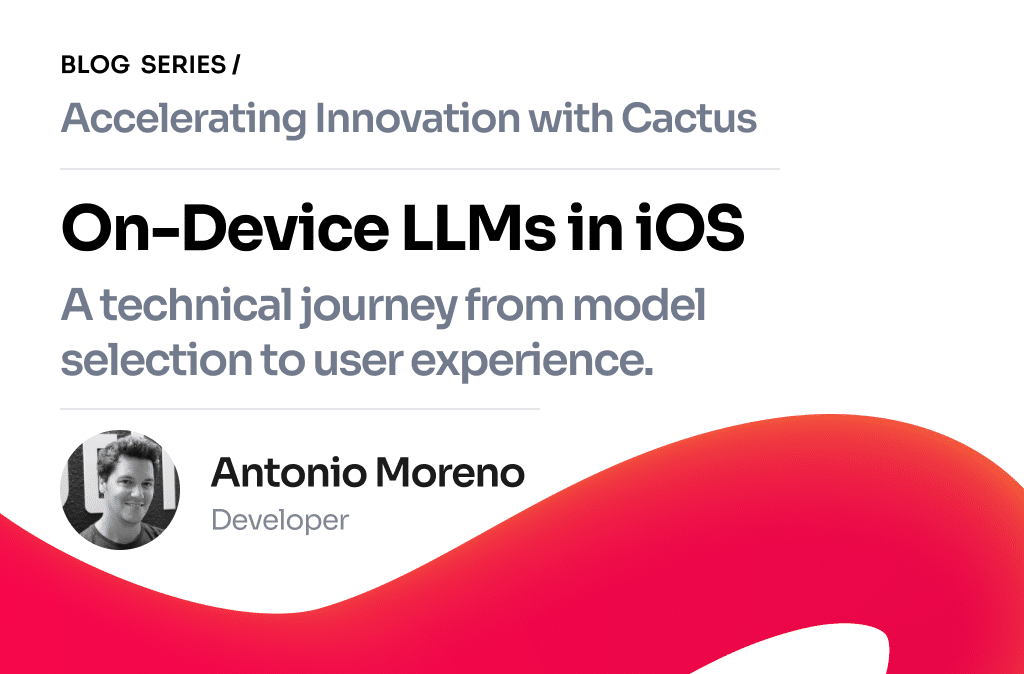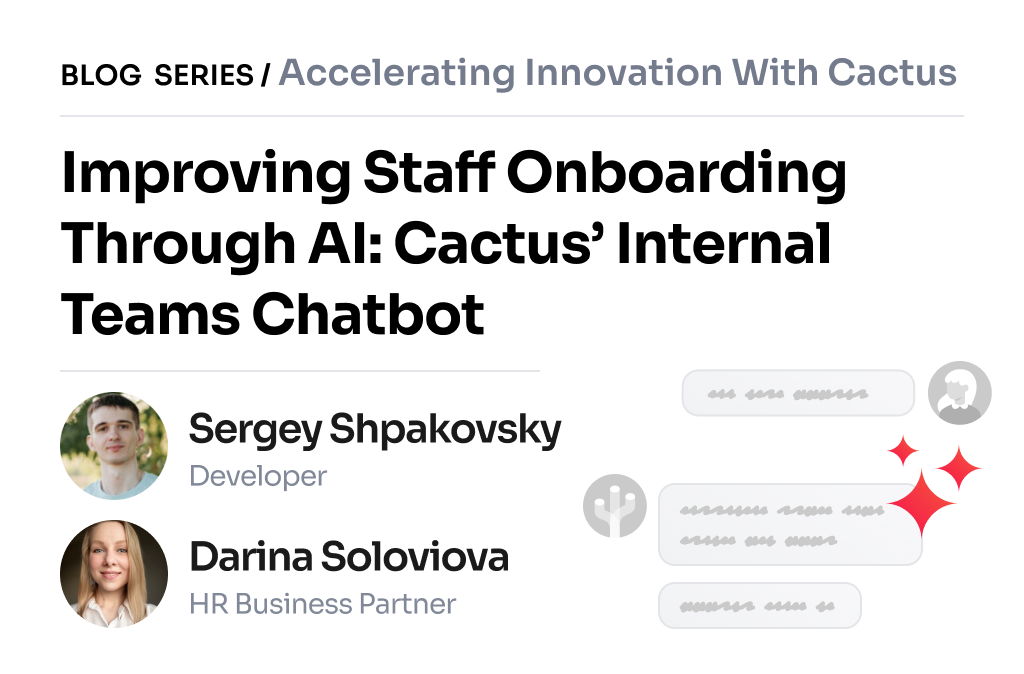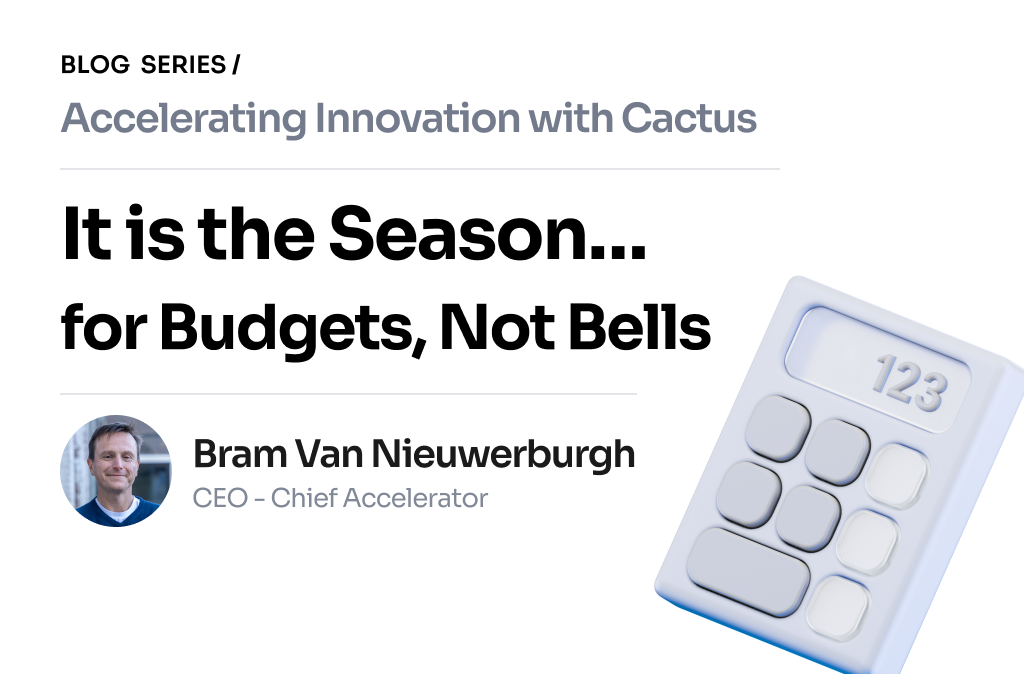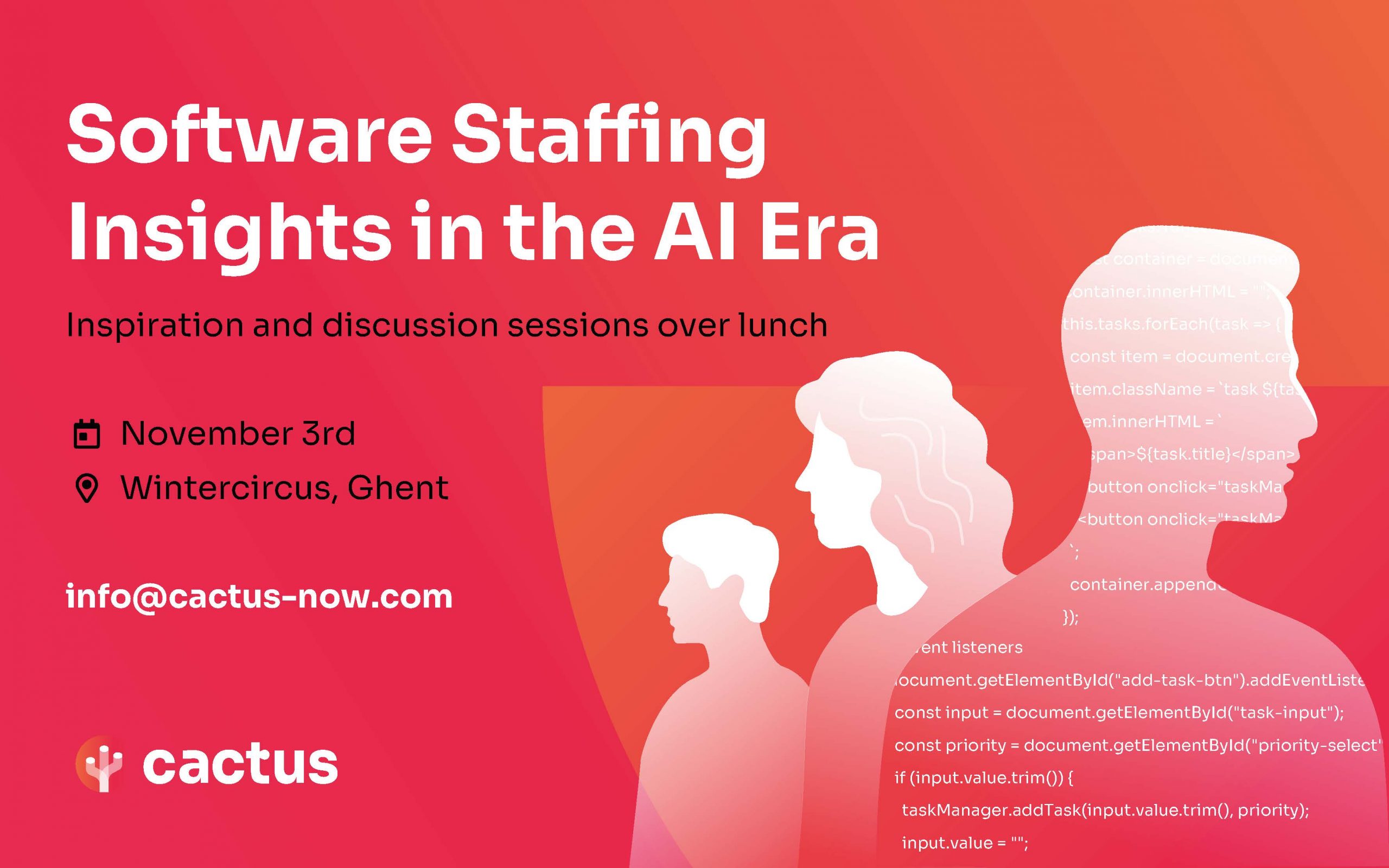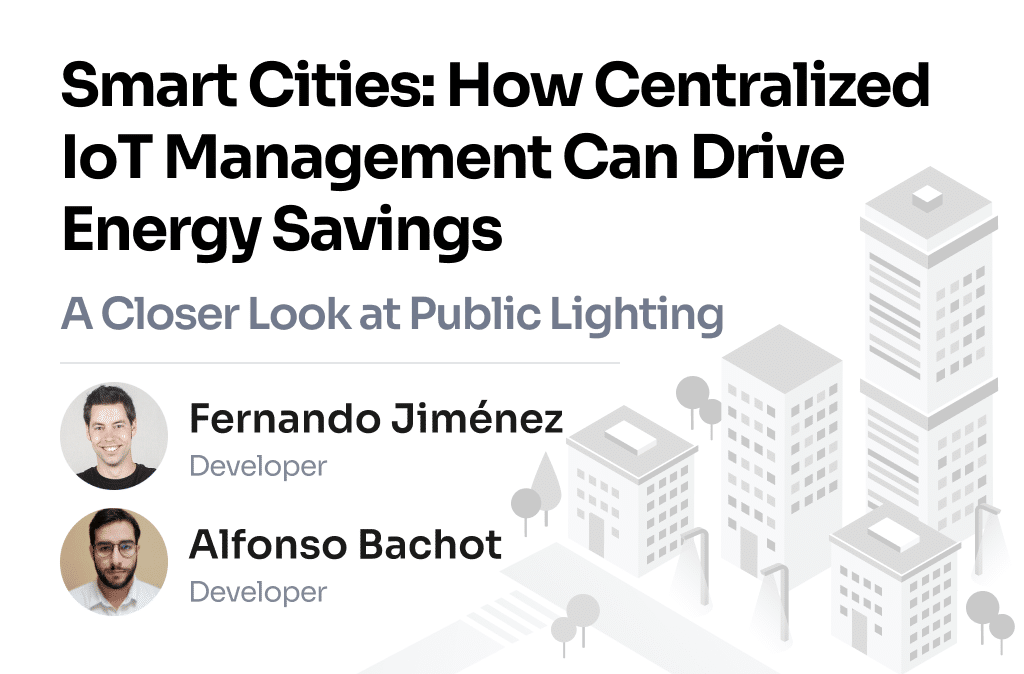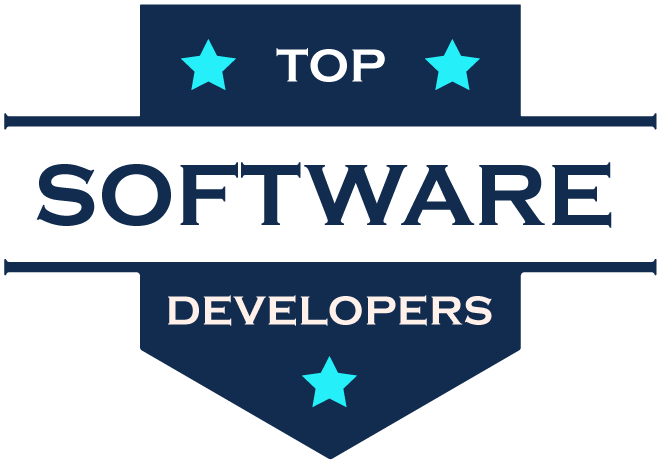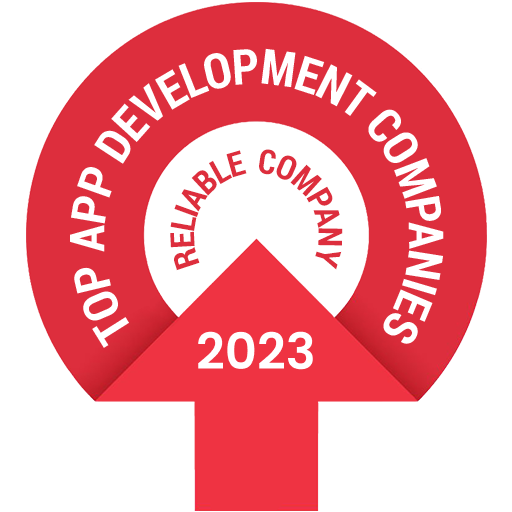Satellites are no longer science fiction – they are becoming a strategic business tool. From connectivity to climate monitoring and from supply chain tracking to emergency communication: space tech is now really landing on Earth. Cactus helps Belgian companies take the leap. “The time to join is now,” say CEO Bram Van Nieuwerburgh and Head of Innovation José Laffitte.

Satellites are no longer just the playground of space agencies or billionaires. What happens in orbit around the Earth today increasingly has a very tangible impact on companies here on Earth. The satellite revolution has begun, and they feel it at Ghent technology company Cactus. Bram Van Nieuwerburgh (CEO) and José Laffitte (Head of Innovation) have made it their mission to show Belgian companies what space travel can mean for their business. Because as they say themselves: there is no time to lose.
Europe Takes Action
“A real game changer is the significant drop in launch costs per kilogram of payload, thanks to the use of reusable rockets,” Van Nieuwerburgh kicks off the conversation. “By reusing the first stage of a rocket, the production and operational costs per launch drop drastically. The cost of bringing a kilogram to low Earth orbit (LEO) has therefore dropped enormously.” This evolution has caused a domino effect: more companies are focusing on space to develop a variety of services, from connectivity and Earth observation to in-orbit servicing.
Governments and space agencies are also increasingly investing in space travel. “In Europe, the European Commission has launched the Iris2 project,” says Van Nieuwerburgh. “It is a 10 billion euro program to build and operate our own satellite constellation. This has never happened before on this scale. Europe is now really joining the global satellite landscape.”
But this is more than a technological story. There is also a geopolitical urgency behind it.
“Self-defense – or rather defense in the broad sense of the word – has become a top priority in Europe,” he says. “Autonomy and independence are the key words, especially when it comes to information and intelligence. If you have to get your data from other nations, it is no longer real intelligence.”
“Autonomy and independence are the key words, especially when it comes to information and intelligence. If you have to get your data from other nations, it is no longer real intelligence.”
The Figurative Planets Are Favorable
According to Van Nieuwerburgh, it is precisely these two forces – a long-planned European initiative that is now becoming reality, and the external pressure from the geopolitical context – that make space tech so topical today. But why should companies also jump on the bandwagon?
“If you look at how space has evolved in recent years, you see that fundamentally a lot has changed,” he says. “There are exponentially more satellites now than there were five years ago , often equipped with specialized equipment such as Earth-facing sensors and cameras. In addition, there are many more LEO (low-Earth orbit) satellites, which fly closer to the Earth and therefore pass over the same area much more frequently. That reduces the revisit time considerably.”
“Because of that lower altitude, there is also much less signal delay (latency) and the resolution of images has improved dramatically. All these factors together make space travel suddenly relevant for a whole range of new applications.”
“ At the same time, costs have dropped dramatically . Both launch costs and operational costs are much lower today than they were five years ago. That combination makes space travel absolutely worth considering for companies.”
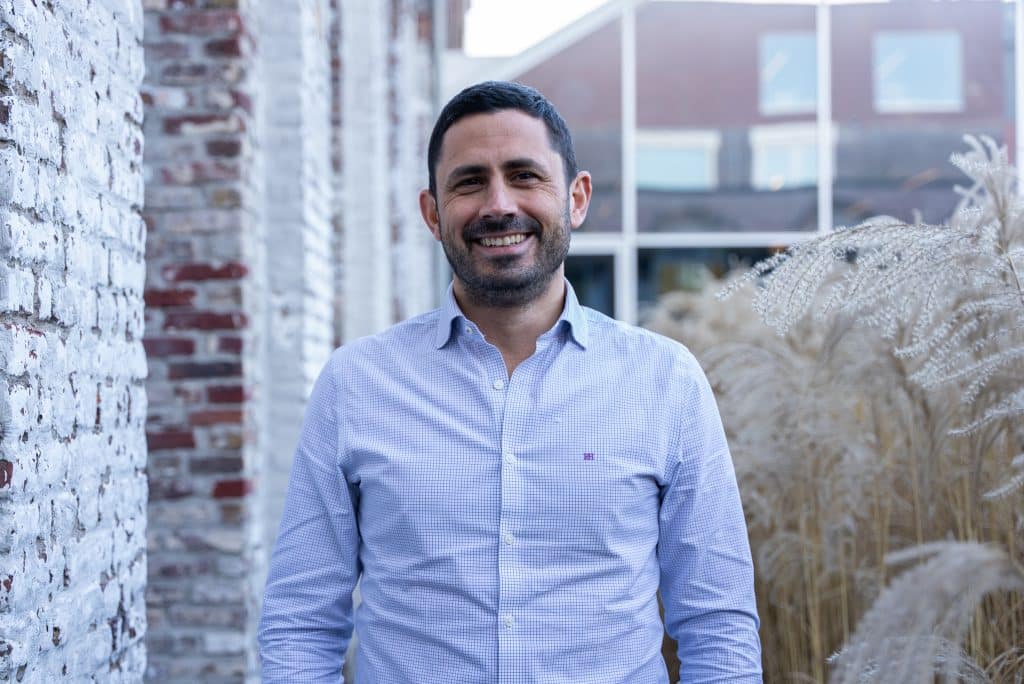
José Laffitte – Head of Innovation
Six Concrete Applications We Are Overlooking
José Laffitte points out six major application domains in which companies can already get started today.
1. Earth Observation
“In Europe, we can be proud of the Copernicus program, equipped with very interesting and diverse camera types. But there are also many private satellite operators, such as ICEYE in Europe or Planet in the US. All these initiatives ensure that we can collect information from space about what is happening on Earth. Think of electricity grid operators who have to inspect their high-voltage power lines. Today, this is done with helicopters equipped with LiDAR cameras, but these inspections cost these companies millions. Think, for example, of checking whether crops are too close to the high-voltage power lines. That poses a major risk. Based on camera images and AI applied to them, these checks can also be done via satellite: more efficient and cheaper.”
“Think of electricity grid operators who have to inspect their high-voltage lines. Today, that is done with helicopters and LiDAR, but those inspections cost those companies millions.”
2. Environmental Monitoring
“You can use satellite images to measure how much gas a ship emits when it approaches a port. Or you can see if there are increased emissions in certain industrial zones. Even border control or detecting illegal deforestation are among the possibilities. Or think of tracking critical assets such as containers or even livestock. Using satellites, that operational efficiency skyrockets.”
3. Telecom
“Telecom applications are traditionally the oldest use of satellites: sending signals for TV broadcasts, such as football matches for example,” laughs Laffitte. “But in recent years, many new applications have been added. Think of IoT (Internet of Things) via satellite. Companies such as OQ Technology in Luxembourg or Sateliot in Barcelona already have satellites in orbit around the earth that enable specific IoT services. A second trend in telecom is direct communication between device and satellite (direct-to-device communication) . Soon you will be able to make calls via satellite without the intervention of a mobile phone mast. Telecom networks are also fully integrating satellite components, thanks to 3GPP’s Release 17, which integrates non-terrestrial networks into the mobile standards.”
4. PNT: Positioning, Navigation, and Timing
“We all use the word ‘GPS’, but in Europe our phones mostly use the signals from the Galileo satellites. PNT applications are crucial. Think of airplanes, Uber, payments… Our world wouldn’t function without it . Logistics companies are also finding more and more ways to take full advantage of these possibilities.”
5. In-Orbit Servicing
“In-orbit servicing (IOS) refers to a set of activities performed on satellites or other spacecraft while they are in orbit around the Earth. The goal? To extend their lifetime, improve their performance or repair damage. Such interventions are usually performed by other – often unmanned – spacecraft, but may also require human intervention in certain missions. Think of refueling satellites, moving them to a different orbit, or assembling and manufacturing parts in space itself. Collecting solar energy in space and then beaming it back to Earth is also actively being investigated as a future application.”
“Collecting solar energy in space and then transmitting it to Earth is also being actively investigated as a future application.”
6. In-Orbit Labs and Experiments
“Experiments aboard the International Space Station and other space missions have shown that it is possible to produce small quantities of medicines in space . In low Earth orbit (LEO), gravity is not really weaker, but objects appear weightless because they are in a constant state of free fall. They are indeed attracted to the Earth, but at the same time they move sideways at high speed, so that they continue to fall around the Earth instead of falling straight towards it. This causes the well-known weightlessness. Proteins behave differently under these conditions than on Earth, and it is precisely this that pharmaceutical companies are now trying to exploit to accelerate their research.”
What Cactus Is Doing in Space
At Cactus, it doesn’t stop at talk: while their core business remains software, some of their systems today literally sit on board satellites.
“In Spain, we are the main partner in a project in which we are developing a 20-kilogram microsatellite that will orbit the Earth at an altitude of 500 to 600 kilometers,” says Laffitte. “This satellite carries, among other things, specialized systems to protect signals from external interference. We develop the software for the on-board computer, the telemetry and the communication with the ground station. In order to be able to design faster and better, we have even built a digital twin of the satellite.”
Cactus also developed TreeSight , a software solution based on earth observation.
“High-voltage power lines are still monitored today with helicopters – expensive and inefficient,” Van Nieuwerburgh explains. “With TreeSight we use satellite images and artificial intelligence to automatically calculate where trees are too close to the lines. The result: 90 percent lower operational costs and a lot fewer incidents. What happened recently in Spain shows how crucial that infrastructure is.”
“With TreeSight we use satellite imagery and artificial intelligence to automatically calculate where trees are too close to the lines. The result: 90 percent lower operational costs and a lot less incidents.”
In addition, Cactus also has its own space tech lab , where they collaborate with ESA (European Space Agency), among others. From that work, a concrete product idea eventually grew that was placed in a spin-off: NXGSAT .
“NXGSAT is developing and building a software-defined modem that uses AI to enable satellite communication within a 5G network,” says Van Nieuwerburgh. “Instead of having to pull kilometers of fiber optic and tear up roads, you can use such a system to connect remote areas directly via satellite. This is a game changer, especially in hard-to-reach regions.”
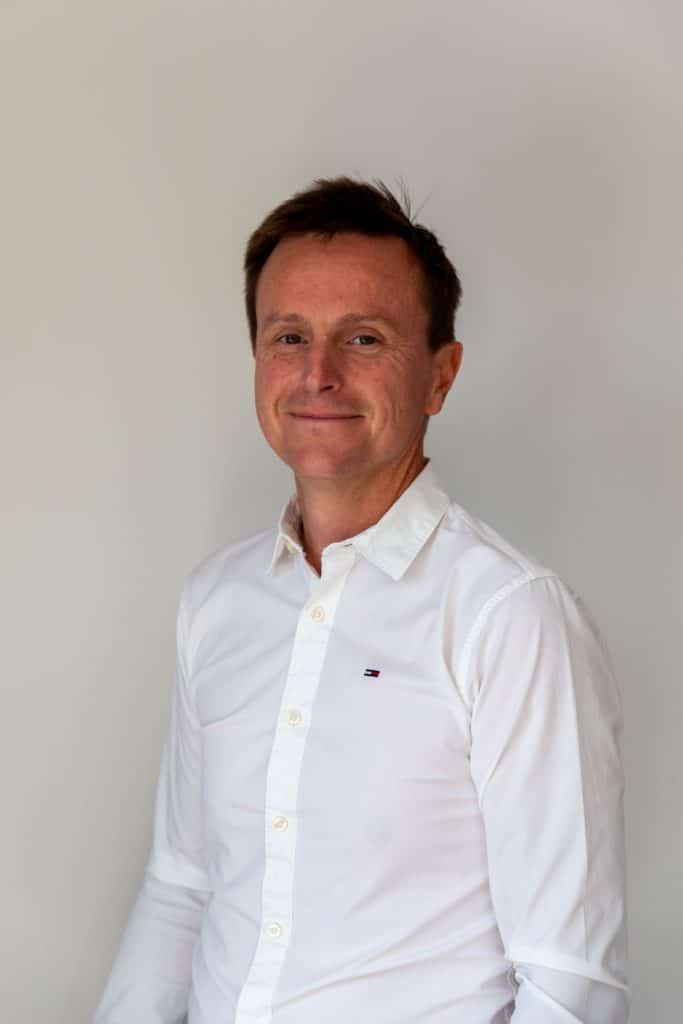
Bram Van Nieuwerburgh – CEO
Defense, Disaster Response and More
Space tech is also on the rise within defense. The European Commission’s IRIS2 program has a clear focus and goal: to provide citizens, governments and companies within Europe with their own constellation of telecommunications satellites in low orbit (LEO) around the earth.
“We are a member of Flanders Space and follow the developments closely,” says Van Nieuwerburgh. “Space Surveillance & Tracking – SST – is becoming one of the major domains. With it, you can monitor both the earth and space activity. A huge amount of public funding goes to such applications, so we remain closely involved.”
Satellites also play a crucial role in natural disasters. “ When the ground network fails, satellites provide emergency communications. Think of floods like those in Spain in 2024, earthquakes or forest fires. During the earthquake in Turkey and Syria in 2023, a large part of the ground communication structure was damaged. Satellite systems proved indispensable for the coordination of international rescue operations. The same was true during the forest fires in California in 2021: there, cell phone masts and fiber optic connections failed, and emergency services had to rely on satellite phones and terminals to remain reachable in remote and risky areas.”
“When the ground network fails, satellites provide emergency communications. Think of floods like those in Spain in 2024, earthquakes or forest fires.”
Start To Space: Getting Started With Ease
Yet many companies still ask themselves the question: what can space technology really mean for my organization or processes? That is exactly where the Start to Space program comes into the picture.
“It is a process in which we guide companies through workshops to discover where space technology can add value,” Van Nieuwerburgh explains. “Sometimes by replacing existing processes, sometimes by adding extra insights.”
According to him, the return is often faster than expected. “Take the example of monitoring high-voltage power lines: you save millions. And many datasets, such as those from Copernicus, are simply available for free. You just have to know where to find them and how to use them.”
Laffitte adds: “With Copernicus, the European Commission has built one of the most advanced and complex space infrastructures ever. These satellites continuously deliver a huge amount of Earth observation data. You can use this data in applications such as environmental monitoring, agricultural optimisation, disaster management or urban planning. So why wouldn’t we use this data?”
Van Nieuwerburgh agrees: “You really don’t have to put millions on the table to get started. Start small, with a proof of concept, and build from there.”
“You really don’t have to put millions on the table to get started with space tech.”
A Big Bang of Opportunities: Move Over, Elon
When we ask Laffitte about the future of space tech, he first points to Elon Musk. “Thanks to SpaceX, satellite launch costs have dropped dramatically in recent years,” he says. “But it’s not just about Musk anymore.”
Europe is also investing heavily in its own space capacity . “The European Commission, ESA and various national governments are pumping large budgets into companies such as Isar Aerospace (Germany), Latitude (France), Orbex (United Kingdom), PLD Space (Spain) and of course ArianeGroup’s Ariane 6, which has now been successfully launched. Europe will soon have several affordable options for launching satellites into space.”
In addition, the integration of terrestrial and non-terrestrial networks continues. “Since 3GPP Release 17, non-terrestrial networks (NTNs) have been officially included in the global 5G standard. That is a milestone,” says Laffitte. “It means that 5G signals can now travel not only via traditional networks – such as cell towers and fiber – but also via satellite. Satellite connectivity will therefore become a native, standardized part of the 5G ecosystem, instead of a separate or proprietary technology.”
This standardisation enables seamless collaboration between ground networks and satellites. “ This makes continuous connectivity achievable in remote, rural or disaster-prone areas , where traditional infrastructure is missing or damaged. This opens the door to new applications in sectors such as shipping, aviation, agriculture and disaster relief – where devices can continue to use 5G, whether they are connected via earth or space.”
In-orbit servicing will also make a major breakthrough, according to Laffitte: “Think of cooling data centers more efficiently or capturing endless solar energy in space. These are breakthroughs that we expect in the coming years.”
And then there are the medical applications. “Proteins behave differently in microgravity. Pharmaceutical companies are experimenting to see how much time they can save in their research and development thanks to those conditions.”
“Satellites enable smarter and more autonomous operations, such as permanent Earth observation for border surveillance. Due to geopolitical tensions, we clearly see a trend towards more self-defense.”
Finally, defense remains more relevant than ever. “Satellites enable smarter and more autonomous operations, such as permanent earth observation for border control. Due to geopolitical tensions, we clearly see a trend towards more self-defense. I expect that in the future, European companies will have their own launch systems, constellations and engineering teams to bring these capabilities in-house. That is a challenge, but also a huge opportunity for Europe.”
Van Nieuwerburgh concludes: “In the midst of all the geopolitical unrest, it is high time to see the opportunities right in front of us. Space offers enormous innovation opportunities for many companies. That is good news for Europe – and certainly for Belgian entrepreneurs. ”
Read the article in dutch at Bloovi.

